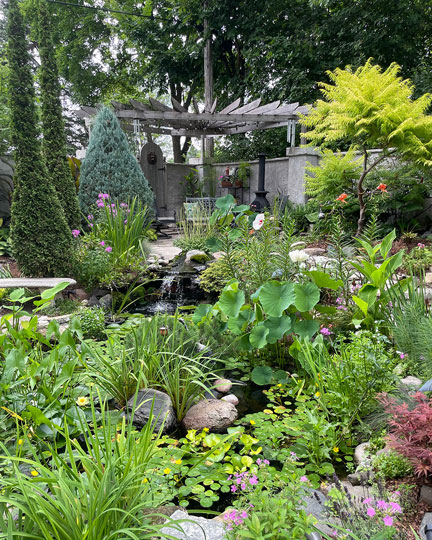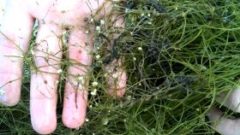Species Spotlight: Great Blue Lobelia
The species spotlighted this month is Great Blue Lobelia (Lobelia siphilitica)! Also known as Blue Cardinal Flower, Great Blue Lobelia is a perennial wildflower native to Wisconsin that grows well along streams, springs, swamps, meadows and other places with sufficient moisture. This species grows up to 4 feet tall, with a leafy stalk on which blue/purple tubular flowers bloom in July – October. Great Blue Lobelia requires moist to wet soil and partial to full sun, and is resistant to deer browsing. This plant has a wide distribution in North America, found in wet ground from Main to Colorado and into Canada, and south to North Carolina and Texas.
The seedlings of Great Blue Lobelia are very tiny at first, before growing into the clump forming wildflower. This plant usually blooms in its first year. Seeds in October – November and in optimal conditions, this plant may self-seed, but is not overly prolific. It is not very drought tolerant, and requires moist soil.
Great Blue Lobelia is a great plant for shoreline plantings. Along with other native species, its roots are great for capturing and slowing down stormwater runoff, and for holding on to soil which helps prevent erosion. In addition, Great Blue Lobelia attacks hummingbirds and native bee species!

Image Credit: Aaron Carlson; www.wisflora.herbarium.wisc.edu; CC BY-SA 3.0

H. Zell; CC BY-SA 3.0
Article written by Katie Reed, Winnebago Waterways Coordinator: katherine@fwwa.org
Featured Image Credit: SB Johnny; CC BY-SA 3.0 Unported
Additional Image Credit 1: Aaron Carlson, wisflora.herbarium.wisc.edu; CC BY-SA 3.0
Additional Image Credit 2: H.Zell, NC Extension Gardner Plant Toolbox; CC BY-SA 3.0
Sources:
Wisconsin Pollinators – Plant Details – Great Blue Lobelia
USDA Plants – Great Blue Lobelia
Wisconsin Herbarium – Great Blue Lobelia
North Carolina Extension Gardener – Plant Toolbox – Lobelia siphilitica
Winnebago Waterways is a Fox-Wolf Watershed Alliance recovery initiative. Contact us at wwinfo@fwwa.org

The post Species Spotlight: Great Blue Lobelia appeared first on Fox-Wolf Watershed Alliance.
Fox-Wolf Watershed Alliance
https://fwwa.org/2023/10/27/species-spotlight-great-blue-lobelia/?utm_source=rss&utm_medium=rss&utm_campaign=species-spotlight-great-blue-lobelia



